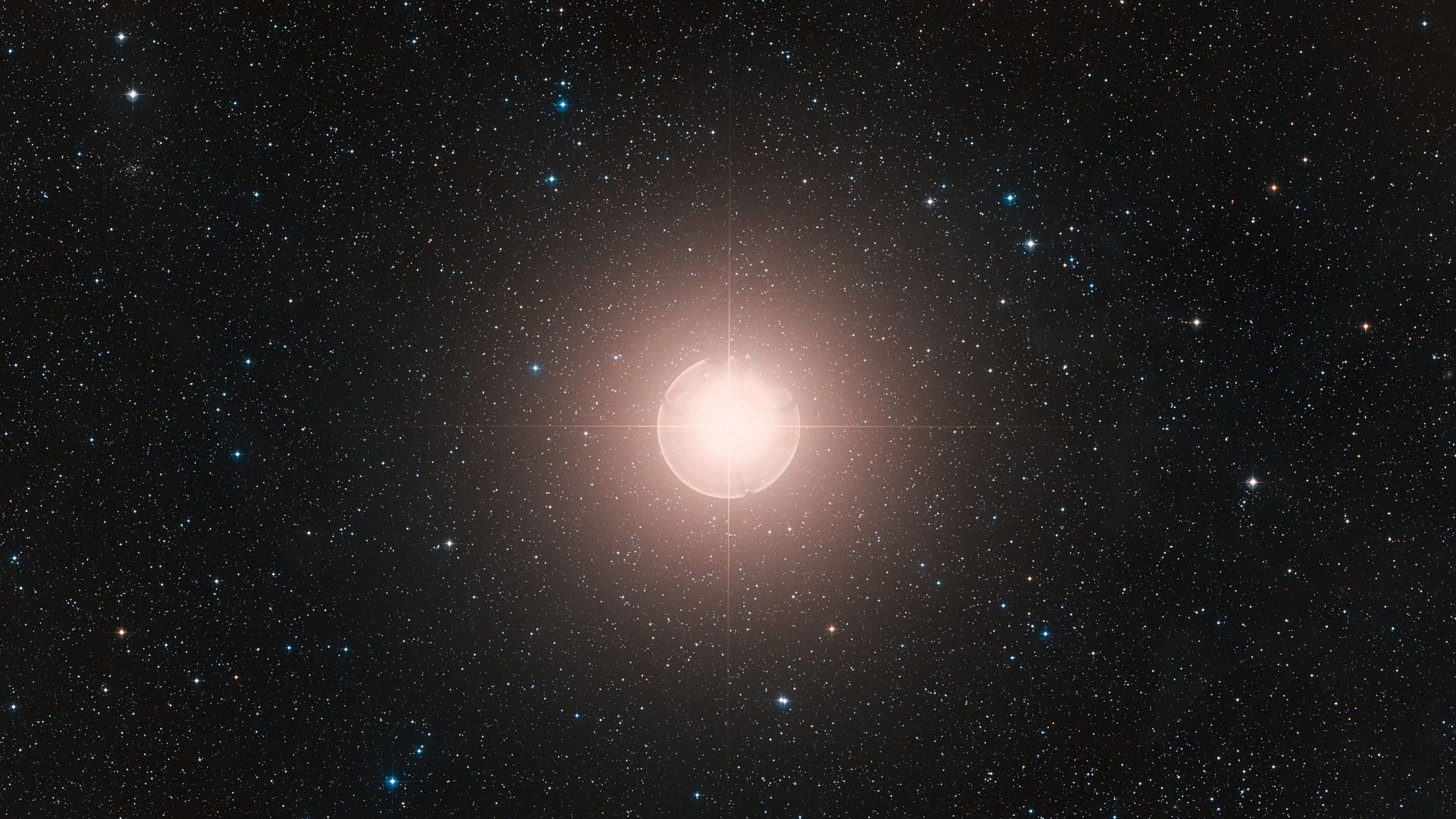🔭 Betelgeuse reveals a surprising stellar companion, previously invisible
Follow us on Google News (click on ☆)
The research team from Carnegie Mellon University seized a unique opportunity when the Gemini North telescope detected a faint light source near Betelgeuse. They immediately mobilized two prestigious space instruments: the Chandra observatory for X-rays and the Hubble Space Telescope for visible observations. This coordination allowed observation of the stellar companion at its maximum separation point from the main star, thus avoiding the overwhelming brightness of the supergiant which is thousands of times brighter than our Sun.

Composite color image of Betelgeuse created from Digitized Sky Survey 2 data
Credit: ESO/Digitized Sky Survey 2
Anna O'Grady, a postdoctoral researcher, emphasizes that this observation represents a first in the history of astronomy. Never before had scientists been able to study this companion. The collected data constitute the most detailed X-ray observations ever made of this iconic star, offering an exceptional study window into this particular stellar system.
The nature of the companion, affectionately nicknamed Betelbuddy, held a major surprise for astronomers. They expected to discover a white dwarf or a neutron star - remnants of end-of-life stars - but the absence of accretion phenomena ruled out these possibilities. Researchers instead favor the hypothesis of a young stellar object, with a size comparable to that of our Sun, which opens new perspectives on the formation of binary systems.
The mass ratio between the two celestial bodies challenges established models of binary stars. Betelgeuse has a mass equivalent to 16-17 times that of the Sun, while its companion has a solar mass. This considerable difference places this system in the category of extreme mass ratio binaries, a family of celestial objects rarely observed until now. This discovery paves the way for the study of other similar systems in our galaxy.
This first characterization of the Betelgeuse-Betelbuddy system marks only the beginning of a promising scientific adventure. Astronomers plan to continue their observations to better understand the dynamics of this unusual stellar pair and its future evolution. Each new piece of data collected will refine our understanding of the formation mechanisms of binary systems in the Universe.
Red supergiant stars
Red supergiant stars represent an advanced phase in stellar evolution. These celestial giants form from massive stars that have exhausted the hydrogen in their core and begin fusing heavier elements.
Their monumental size places them among the largest individual objects in the Universe. If Betelgeuse were placed at the center of our Solar System, its surface would extend beyond the orbit of Jupiter, engulfing the inner planets. This expansion is accompanied by a drop in surface temperature, giving these stars their characteristic red color.
The lifespan of red supergiants is relatively short on a cosmic scale, typically only a few million years. Their final destiny is spectacular: they end their existence in supernova explosions that scatter into space the heavy elements synthesized during their lifetime.
These stars play an essential role in the chemical enrichment of the interstellar medium, contributing to the formation of subsequent stellar generations and the planets that accompany them.